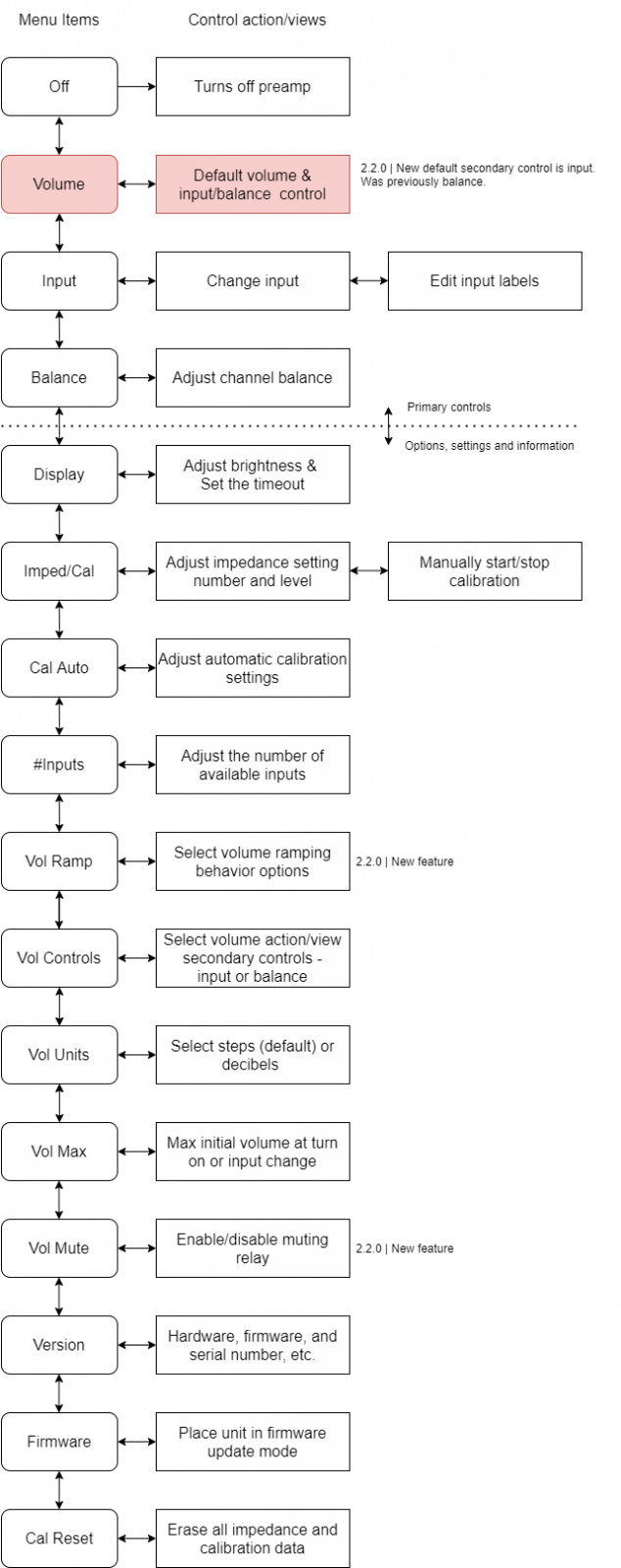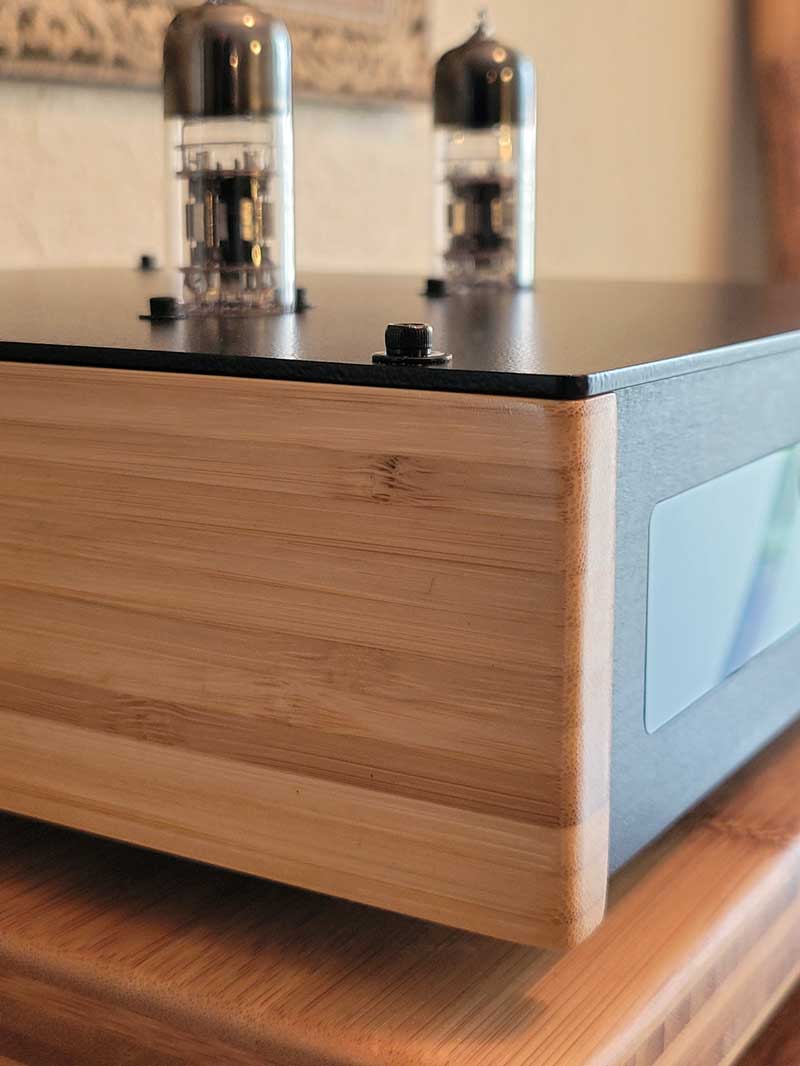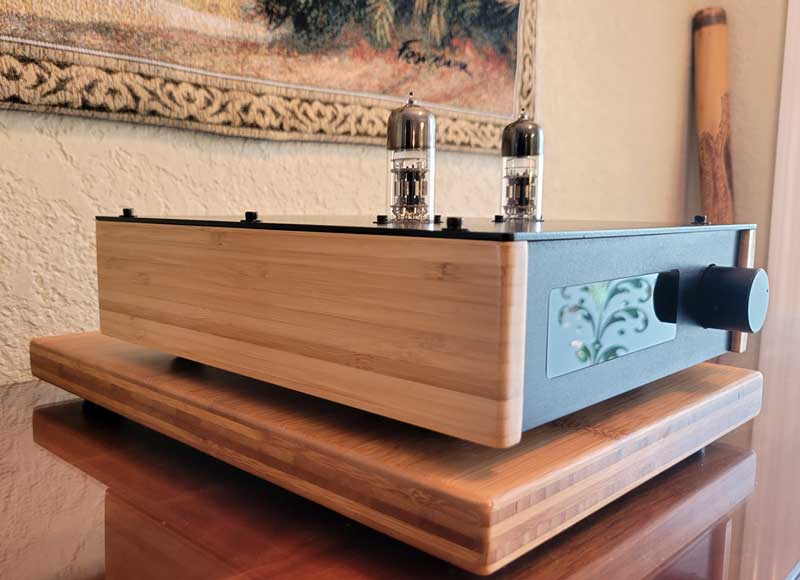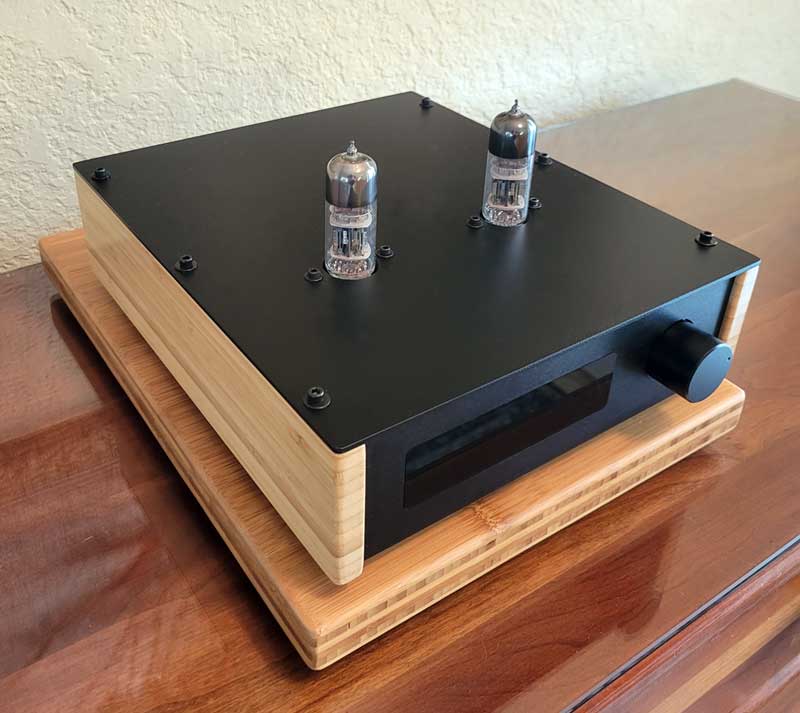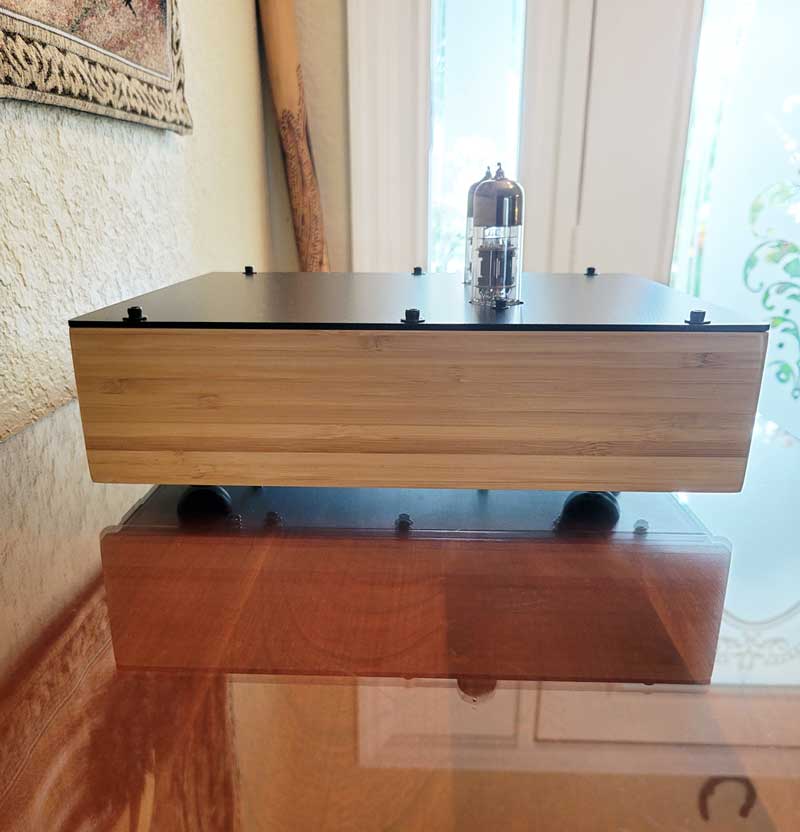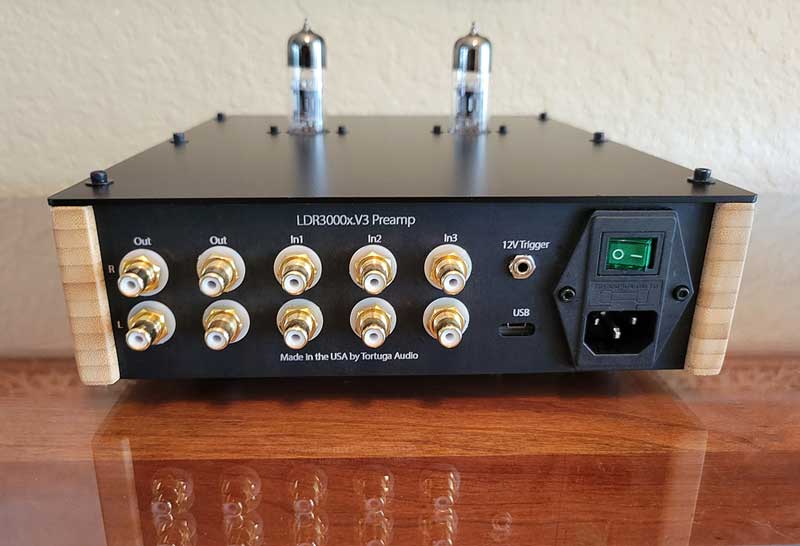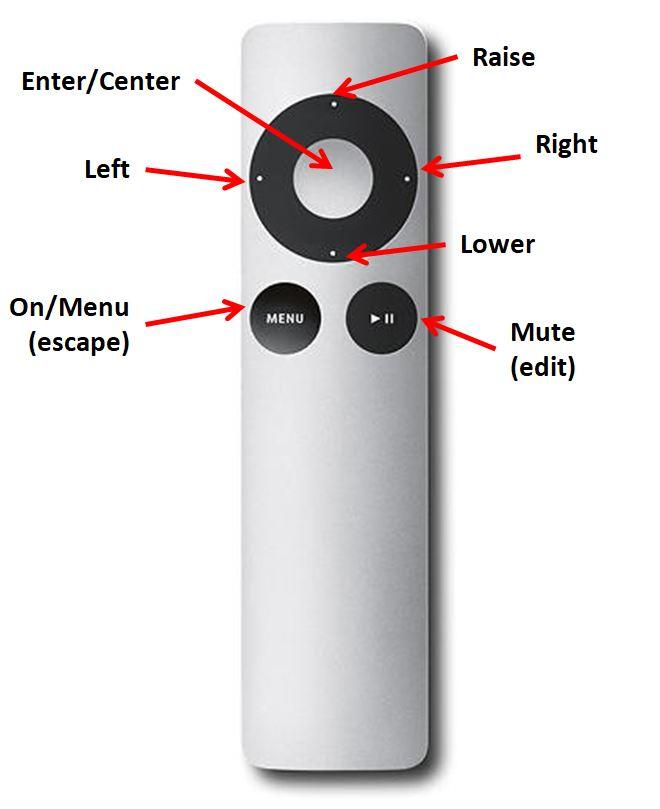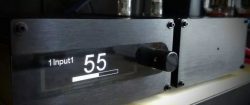LDR3000x.V3 High Performance Passive or Active Preamp
$1,495.00 – $3,295.00
The LDR3000x.V3 is a flexible high performance, remote controlled, LDR (light dependent resistor) preamp available in 9 different configurations including as a passive, as an active solid state or as an active tube type preamp. Each type can be ordered as single-ended only (3 in | 2 out | RCA), balanced only (3 in | 2 out | XLR) or mixed RCA/XLR (6 in | 4 out). Each configuration can be remote controlled (Apple remote) or controlled from the front panel (rotary encoder) with a high contrast, white-on-black, interactive menu driven OLED display.
The sound quality of the LDR3000x.V3 is exceptional whether you opt for the passive or one of the active configurations. With 9 different configurations to choose from and the clear, natural proven sound of LDR attenuation, you will not be disappointed.
Flexible preamp platform
The LDR3000x.V3 is designed around our high performance V3 Max electronic LDR stepped attenuator & preamp controller in combination with an attractive enclosure composed of anodized and powder coated aluminum and sustainable bamboo. [caption id="attachment_20116" align="aligncenter" width="681"]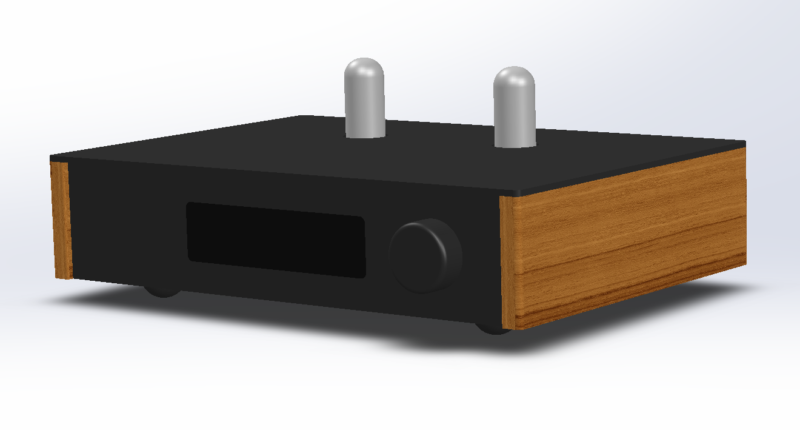 LDR3000x.V3 Tube Preamp with mixed XLR and RCA inputs/output - wide enclosure[/caption]
The LDR3000x preamp platform can be configured as either a passive or active preamp. The active version can be configured as either a solid state or tube based preamp. Regardless of preamp type, you can opt for single-ended RCA signals only, balanced XLR signals only, or a combination of both. Combined signal types requires a wider version of the enclosure but has the same height/depth as the narrower build and is otherwise identical.
All outputs are dual/parallel for convenience when bi-amping or driving both a main amp and a separate subwoofer amp.
LDR3000x.V3 Tube Preamp with mixed XLR and RCA inputs/output - wide enclosure[/caption]
The LDR3000x preamp platform can be configured as either a passive or active preamp. The active version can be configured as either a solid state or tube based preamp. Regardless of preamp type, you can opt for single-ended RCA signals only, balanced XLR signals only, or a combination of both. Combined signal types requires a wider version of the enclosure but has the same height/depth as the narrower build and is otherwise identical.
All outputs are dual/parallel for convenience when bi-amping or driving both a main amp and a separate subwoofer amp.
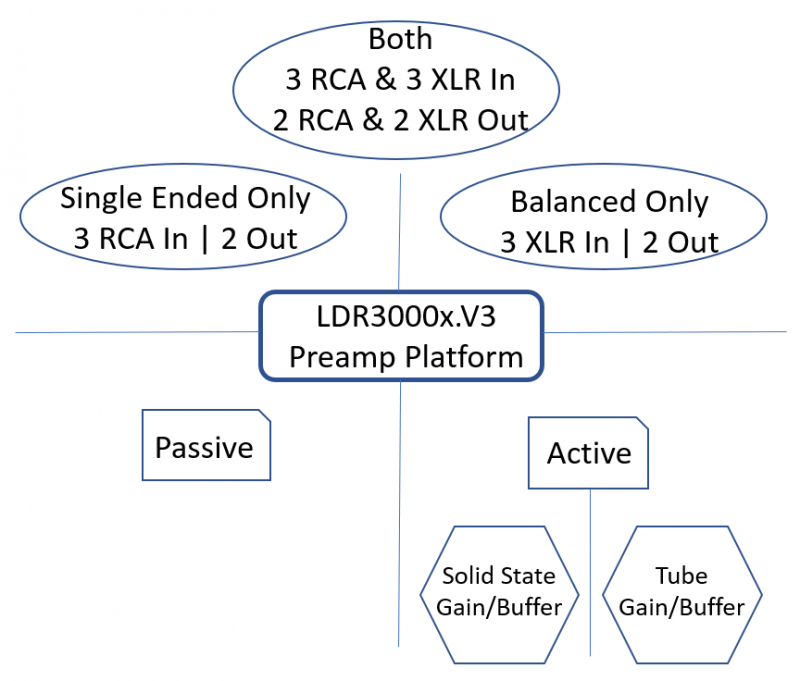
Nine (9) preamp configurations
The flexible LDR3000x.V3 preamp platform is available in nine (9) different preamp configurations. Each configuration is listed below along with its base pricing. All configurations start with the V3 Max attenuator/controller in the LDR3000x enclosure. Different internal modules and rear panel assemblies are used in each configuration. Since these configurations are mostly modular, it's not too difficult to change to a different configuration later on. [table id=59 /]A great sounding preamp
Built around our latest ePot.V3 Max stepped attenuator & preamp controller, the LDR3000x is arguably our best sounding preamp to date whose subjective performance will please even the most discriminating listener.V3 Max electronic stepped attenuator & controller
The heart of the LDR3000x is our latest preamp attenuator/controller, the ePot.V3 Max (the "V3" or "Max" ). The V3 is the culmination of over a year of development and refinement of our evolving 10+ year LDR attenuation technology. The V3 combines exceptional sonic performance in an integrated, software driven, preamp controller that includes input switching, remote control and a menu driven interactive high contrast OLED display interface. Features of the ePot.V3 Max include:- 100 step attenuator over 60 dB range
- Smooth volume stepping with no sonic artifacts
- No mechanical switches in the signal path
- Menu driven visual control with high contrast 256 x 64 OLED display
- LDR (light dependent resistor) attenuation
- precision closed loop LDR current control
- integrated offline self calibration of the LDRs
- replaceable plug-in LDR module
- Integrated input switching (3 single-ended stereo sources) via LDR switches
- Remote controlled (Apple infrared remote)
- Manual control via rotary encoder with integral push button
- Smooth muting/unmuting
- Left/right channel balance (+/- 10 db)
- Updateable firmware
Operating instructions
The operation of the LDR3000x.V3 is indistinguishable from the underlying ePot.V3 Max Controller/Stepped Attenuator at the heart of the LDR3000x. The operating instructions for the V3 Max are available in our online product documentation and can be found here.Common specifications
The following specifications are common to all LDR3000x.V3 configurations. You can find specifications for the active solid state and active tube versions in their own tabbed sections. [table id=60 /]SSPB.V3 solid state buffer
The active solid state version of the LDR3000x.V3 adds our SSPB.V3 solid state preamp buffer module to our core V3 Max stepped attenuator to deliver clean, robust current drive. A highly neutral yet dynamic solid state buffer, the SSPB.V3 enhances performance when a passive attenuator alone may not satisfy.
The SSPB.V3 is our 3rd generation solid state buffer that is designed as both a stand-alone buffer board and also as a plug-in module. When used as a plug-in, it mounts directly on to the V3 Max attenuator/controller board turning the V3 Max into a compact, high performance solid state preamp engine that transforms the LDR3000x from a passive into an active preamp.
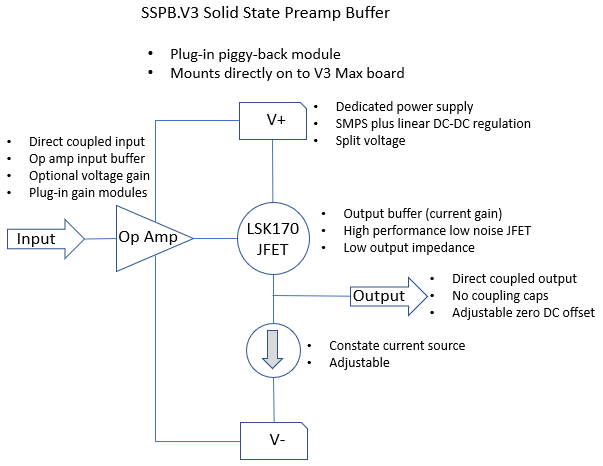
Dynamic authority without editorializing
Our goal in offering an active solid state preamp is to augment the performance of our core V3 Max LDR attenuator/controller while retaining all its positive characteristics and not adding any coloration of its own. For this we chose the proven low-noise dynamic current drive of the LSK170 JFET together with a neutral high impedance unity gain stable JFET op amp as an input buffer. The result is a neutral buffer with robust dynamic authority with minimal editorializing. Just the way we like. it.
Buffered input stage with optional gain
The SSPB.V3 employs a high impedance audio op amp input buffer stage that is set by default to unity gain (no signal amplification). The simple fact is most audio systems require no actual gain (voltage boost) from their preamp in order to deliver adequate volume headroom. But just in case your system does needs it, you can increase the gain by swapping out a a simple pair of plug-in gain resistor modules that provide either +6 dB or +12 dB gain. Other gain levels can be achieved by using a custom set of plug-in gain modules which can be ordered by request.
Also, since the 8-pin dual channel input stage op amp is socketed, those wishing to explore alternative input stage op amps can do so.
No coupling capacitors
The input and output of the solid state drive are both direct coupled. This means there are no input or output coupling capacitors in the signal path of the solid state LDR3000x.V3. This is made possible by using a dedicated 2 stage split voltage power supply for powering both the op amp input stage and the JFET output stage. This power supply is separate from the power supply for the V3 Max attenuator/controller.
The DC offset of the preamp output can be trimmed to near zero levels through easily adjustable trimmer pots that require only a small screwdriver and a volt meter to measure each output signal. Doing so does require removing the top cover of the preamp to access the solid state buffer board.
Specifications
TPB.V3 tube preamp buffer
The TPB.V3 tube preamp buffer deliver robust dynamics with just the right touch of that airy and sparkling sound that only tubes can deliver. If the rest of your system has that dry solid state sound, adding in the TPB.V3 tube preamp buffer rarely fails to satisfy.
The TPB.V3 is our 3rd generation tube buffer that is designed as both a stand-alone tube buffer board and also as a plug-in module. to the V3 Max. When used as a plug-in, it mounts directly on to the V3 Max attenuator/controller board turning the V3 Max into a compact, high performance tube preamp.
Direct coupled tube input stage
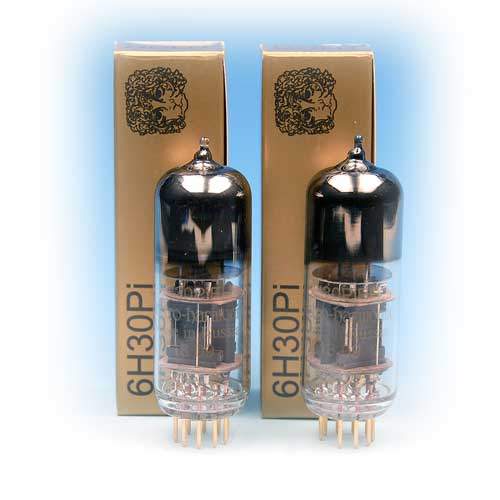 The incoming audio signal connects directly to the triode’s grid with no input coupling capacitor. A 100k ohm Vishay Dale resistor sets the tube buffer’s input impedance making the tube buffer extremely easy to drive.
The incoming audio signal connects directly to the triode’s grid with no input coupling capacitor. A 100k ohm Vishay Dale resistor sets the tube buffer’s input impedance making the tube buffer extremely easy to drive.
We chose the 9 pin 6H30Pi Gold triode tube from Electro-Harmonix because of its growing reputation for sonic excellence, robust long-life, and the fact that it’s a contemporary tube that isn’t likely to go out of production for a long time to come.
We run the 6H30’s at a much lower plate voltage than most other tube preamps. This lowered voltage reduces tube stress and together with its already robust design all but guarantee that the 6H30’s will last indefinitely.
Most importantly, the 6H30 is a delightfully smooth, neutral and muscular sounding tube with just the right amount of tube euphonics.
Tube rolling possibilities
The TBP.V3 tube preamp buffer allows you to substitute the stock 6H30 tube with any tube from the 6DJ8 / ECC88 / 6922 / 7308 family of tubes which opens up a big wide world of tube rolling possibilities. More info on tube rolling the buffer can be found here.
Optional gain if you need it
The LDR3000x.V3 is designed by default as a unity gain (no signal amplification) preamp. The reason for this is quite simple. Most home audio stereo systems do not require signal amplification by a preamp in order to achieve sufficient volume levels. And since all amplification increases signal noise, why amplify any more than is necessary?
For those systems that need a little more volume headroom, the gain of TPB.V3 tube buffer can be increased by the user by swapping out the unity gain plug-in gain modules with higher gain plug-in modules of +3 dB (1.414 x gain) or +6 dB (2.0 x gain).
Powerful solid state output stage
The output stage of the TPB.V3 is the buffer proper. And the heart of any buffer is its current amplifier (a.k.a. “current drive”). Unlike a voltage amplifier (voltage gain stage) which makes music louder, a current amplifier delivers the music with more authority, power and dynamics. To use the garden hose analogy, if music volume is water pressure, then current drive is the capacity to deliver the water flow. That’s the job of the audio buffer; to deliver the content (current) of the audio signal represented by the voltage.
To this end, we employ the highly effective, low noise LSK170 JFET transistor in an elegantly simple class A constant current circuit with commensurate low output impedance. The result does not disappoint.
In fact, this is essentially the same proven buffer design used in our SSPB.V3 solid state preamp buffer. However, unlike the solid state buffer, the tube buffer requires that we use a DC blocking capacitor at the output to deliver a zero DC offset.
Robust hybrid power supply
The TPB.V3 is powered by an oversized 45 VA multi-stage power supply that starts with a highly efficient switching stage that converts either 120 or 240 VAC mains power into 12 VDC. The raw DC power is goes through a filter into pair of dedicated linear DC-DC regulators to deliver separate dead quiet DC current to each tube heater element. A separate circuit boosts the raw DC voltage which is then run through yet another DC-DC regulator to deliver low-noise plate voltage to the tube.
Given its high current capacity, the TPB.V3 is able to handle the current requirements of almost any 9 pin tube available today. Power supply will not be a limiting factor for those who consider tube rolling to be an official audio sport.
Output Coupling Capacitor upgrades
Since the TPB.V3 relies on an output coupling capacitor to pass through the audio signal, the performance of that capacitor becomes the ultimate limiting factor in performance. We employ a good yet modest stock polypropylene output coupling capacitor that can be upgraded to either an excellent high performance V-Cap ODAM (oil damped advanced metallized) capacitor or the quite pricey V-Cap CuTF (copper foil fluoropolymer film) capacitor for those seeking the ultimate in performance.
Specifications
These specifications reasonably reflect the current model and are subject to updating and modification without notification.
(coming soon)
LDR3000x.V3 operations & control
The information provided below can also be found in our online product documentation for the V3 series controller.
The following covers ePot.V3 operation & control as it applies to both the Mini & Max versions of the ePot.V3 preamp controller and stepped attenuator, both with and without the OLED display.

If you own a V3 series Tortuga Audio preamp, you can skip down to the section titled "V3 controls | with OLED display" and focus on information specific to the V3 Max controller.
The Apple Remote
The Apple remote has only the 7 controls buttons as shown below. These are adequate for common control actions like turning on, muting, adjusting volume etc. More complex control actions require menu driven interaction between the remote and the visual OLED display.
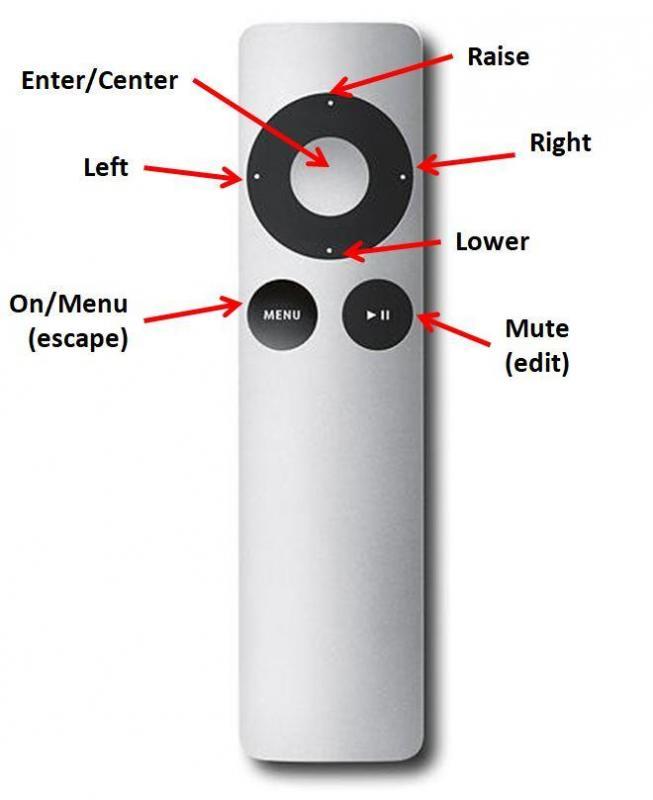
The OLED display
The OLED display is a 256x64 bit high contrast white-on-black graphical display. It works interactively with the Apple remote to allow the user to navigate a menu tree to makek control changes or select or change options. Being a graphic display, the OLED can display a wide range of text, numbers, lines, and images. These capabilities are used to good effect to enable the user to easily configure and control our preamps.
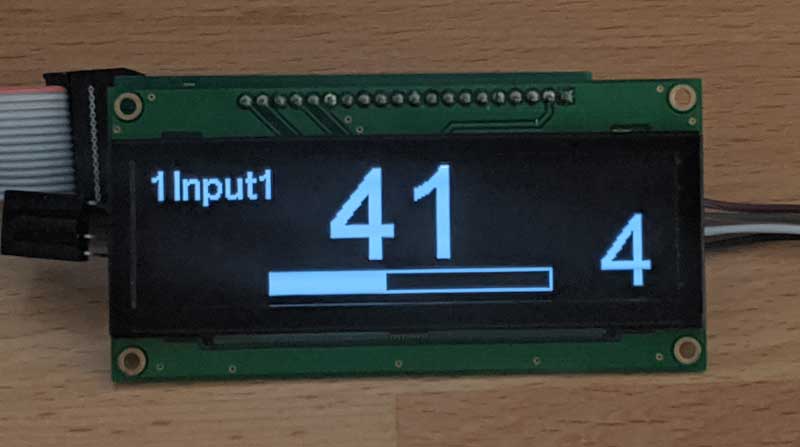
Click on the image above to jump to more detailed documentation on the OLED Display.
ePot.V3 operation & control | Status LED only
The ePot.V3 Mini and Max are designed to work best with the OLED display. However, both V3 models can also be operated without the OLED display albeit with a reduced set of control features and no ability to change controller settings/options. When operating without an OLED display is strongly recommended that a status LED light be attached to provide the most basic visual feedback.
The controls available without an OLED display include:
- turn power on/off
- raise/lower volume
- muting/unmute output
- left/right channel balance adjustment
- input switching (V3 MAX only)
A detailed description of the V3 controls without the OLED display are provided below. Where there are differences between the Mini and Max, these are noted. The control information described below assumes the following:
- No OLED display
- Status LED attached
- Remote control active (IR receiver attached | using Apple remote)
- Encoder is attached (by default in all Mini's)
The details of each control function is contained within the expandable accordion sections below.
ePot.V3 operation & control | with OLED display
The ePot.V3 Mini and Max both designed to operate optimally with an OLED display. The OLED display provides context and feedback wherein the user is presented with a full set of menu driven controls plus the ability to change controller settings/options to suit. We high recommend using the V3 preamp controller/attenuators together with the OLED display.
The controls described below relate to both the ePot.V3 Mini and Max operating under the following conditions only:
- An OLED display is attached
- The IR receiver & encoder are connected through the OLED display
- An optional status LED is also attached (concurrent use of both OLED and status LED is possible with the Max only)
OLED control menu rules
The OLED control menu navigation "rules" are the same for both and are summarized as follows:
Menu Item Labels - The labels listed under the "Menu Items" column below are the actual labels shown in the OLED display
Navigating the List - The user navigates up/down the menu items list using the raise/lower buttons on the remote. You don't see the whole list, you only see the current menu item label that you're on.
Selecting a Menu Item - A menu item is selected/activated by pressing the center button on the remote. For example, if the "Off" menu item is currently being displayed, pressing the enter button will turn off the preamp. In this example, "Turns off preamp" is the resulting control action. As another example, if the "Volume" menu item is currently being displayed, pressing the enter button will switch the preamp into the default volume control action/view.
Control Action/Views - When you select/activate a menu item, you leave the menu items list and switch to the selected control action/view. Within each control action/view you use the buttons on the remote control (raise, lower, left, right, menu, mute and center) to manipulate the available controls which are different and specific to each control action. This is difficult to explain in text form and relatively easy and intuitive to understand with a little hands-on experience.
Volume Control | the default Control Action/View - The volume menu item and associated control action/view are highlighted in red. Volume control is the the default control action/view. This is where you'll spend 99% of your time. No matter what other control action/view you might be in, in most instances you can return to the default volume control action/view by simply pressing the center button on the remote - kind of a universal "escape to home".
Escape out via Menu button - When in any of the control action/views, pressing the Menu button on the remote will exit that control action/view and revert back to the associated menu item. Pressing the Menu button again will revert you back to the default volume control action view.
Escape back to volume control via Center button - When in any of the control action/views, pressing the center button on the remote will usually exit that control action/view and revert back to volume control action/view.
V3 Mini Control Menu | OLED
The control menus for the Mini is essentially a subset of control menu for the Max. Both control menus are shown below.
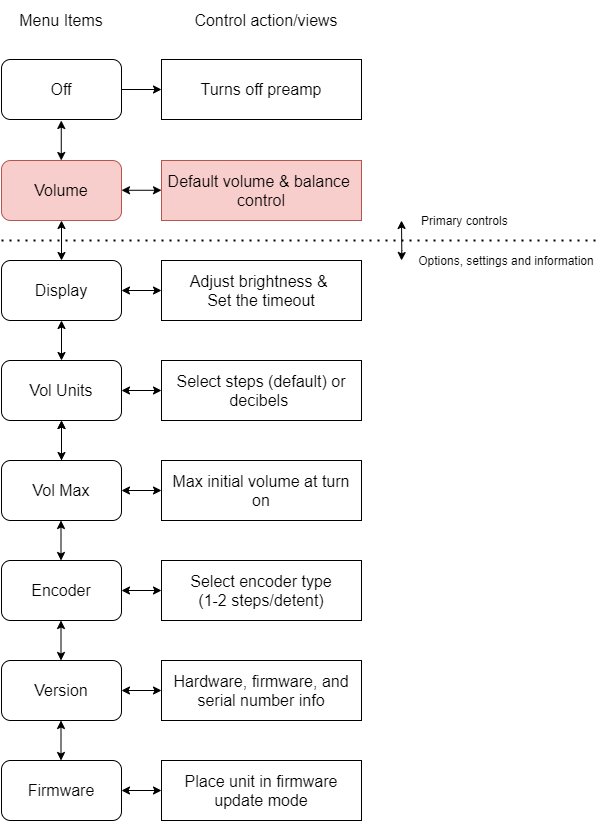
V3 Max control menu | OLED
The control menus for the Max has all the same elements as the Mini plus additional elements that are mostly related to input switching and the ability of the Max to adjust its input impedance and to calibrate the LDR module.
The control menu structure is outlined below. Each V3 control feature/function is explained in detail. Some of the control topics listed do not correspond to a specific OLED menu item. The controls that do correspond to a specific OLED control menu item are marked (menu). Controls that apply to only to the Max or Mini are marked accordingly.
